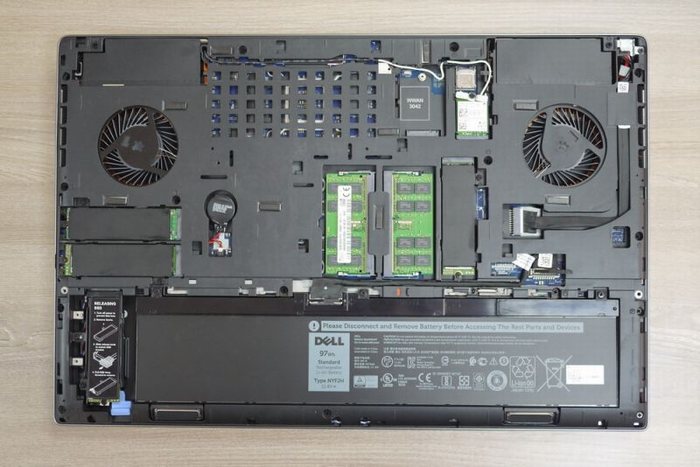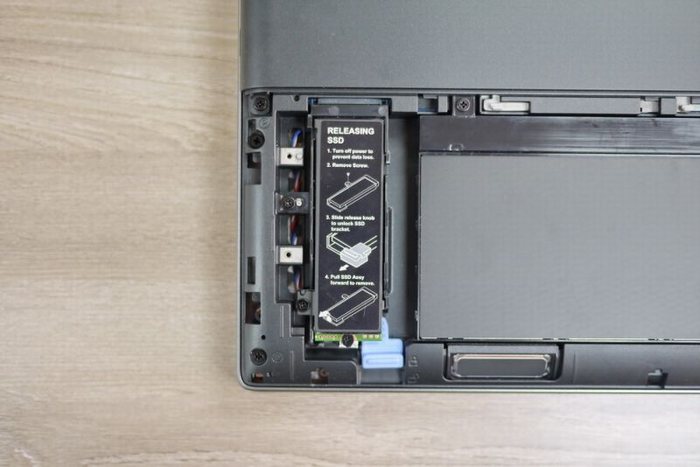The Dell Precision 7730 features an Intel 8th-generation Core i9-8950HK processor and comes with two 16GB DDR4-2666 memory modules. The laptop has four memory slots, supporting up to 128GB of DDR4-2666 memory or 64GB of DDR4-2666 ECC memory (with optional 32GB of DDR4-3200 high-speed memory).
The laptop has a 17.3-inch IPS screen with a 3840 x 2160 resolution and an NVIDIA Quadro P5200 graphics card with 16GB of video memory.
The Precision 7730 features two Thunderbolt 3 ports, three USB 3.1 Gen 1 ports (one supports power-off charging), an SD card reader, a mini DisplayPort 1.4 port, an HDMI 2.0 port, a docking port, a smart card reader, and an infrared camera.
In this guide, I will remove the battery cover and bottom cover to access the battery, M.2 SSD, RAM, CMOS battery, and WWAN M.2 slot.
Teardown is what we do! Follow us on Facebook for the latest repair news.
First, we need to remove the battery cover, move the latch to the left, and then slide the battery cover down to remove it.
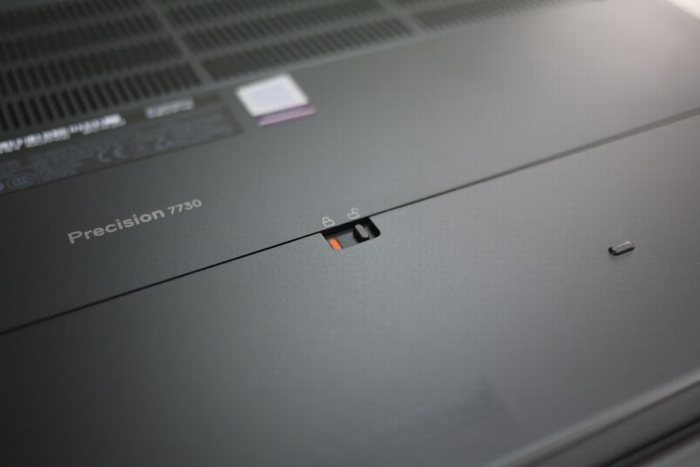
Under the battery cover, you can access the battery and an M.2 SSD. The SSD is also covered with a heat sink.
Its battery is secured on the laptop body with screws. Below the battery is the speaker assembly. Here, we need to remove the two screws that secure the upper back cover.
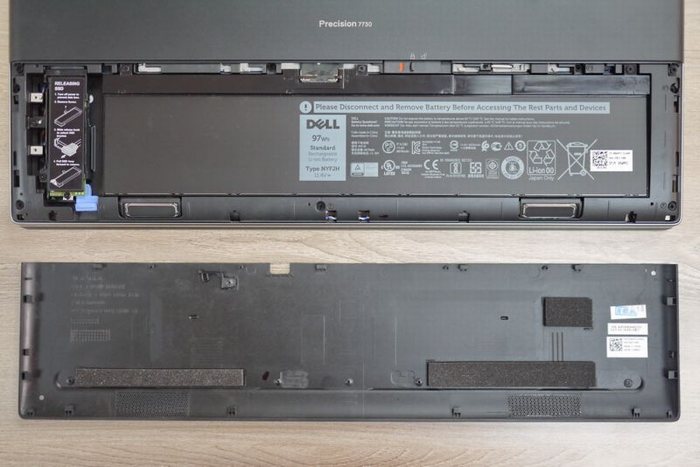
Under the back cover, you can access the SSD, RAM, wireless network card, and free WWAN slot.
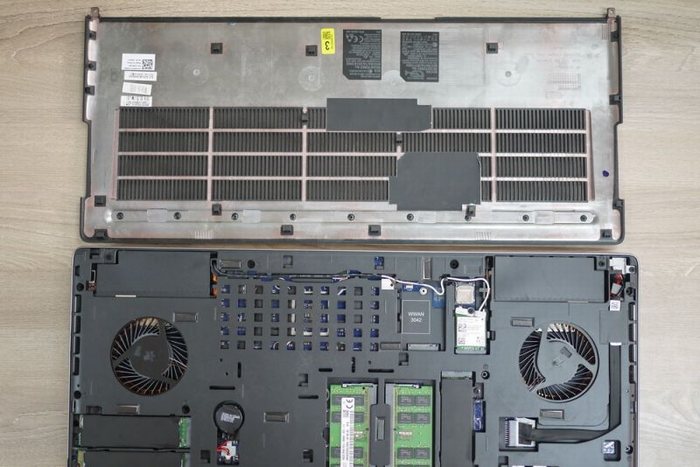
This is the internal structure after removing the back cover. The laptop has four M.2 slots and two memory slots, but according to official information, it should have four memory slots. It is speculated that the other two memory slots are located on the back of the motherboard. By the way, it comes with a SK Hynix PC401 256GB PCIe 3.0×4 NVMe SSD.
It will be very convenient to upgrade the memory and SSD, but removing the middle frame to clean the fan and heat sink may be more troublesome.
Finally, let’s take a look at the M.2 SSD next to the battery. This Precision 7730 comes with a 97Wh battery. If you choose a 4-cell battery, you can install a 2.5″ mechanical hard drive. This is undoubtedly good news for users who need to store a large amount of data and files.
